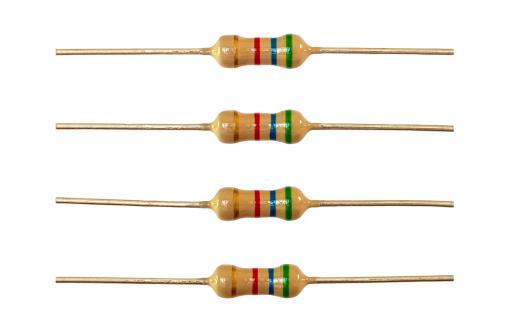What Is Current Sensing?
Current sensing is the detection and conversion of electrical current into observable form. Electrical current is the rate of flow of electrical charges. The higher the current is in a fixed resistance, the higher the voltage is across that resistance. Current flow can be measured using current sensors, while current sensing resistors convert current into voltage.
A resistor is a partially conducting material that limits the current, like a faucet tap that controls the rate of water flow. When electrical voltage has no current flow associated with it, it is similar to a closed faucet stopping a high-pressure water source. An equivalent current sensing device is a flowmeter, which uses a rotating vane that rotates faster when the flow rate is high. The speed of the vane is proportional to the flow rate.

Another way of current sensing is the use of pick-up coils magnetically coupled to a current source by a magnetic core. This is likened to the transformer principle, wherein a current on the primary winding of a transformer is induced in the secondary winding. The stronger the primary current, the higher the secondary current is.
Clamp on current meters works on the principle of magnetic induction. When the magnetic core is clamped around a current-carrying wire, secondary current is induced, which is a function of the primary current. Handheld clamp meters usually have voltmeters on the same device. The ability to measure current without interrupting the test circuit and to measure voltage makes this test equipment very useful in preventive and corrective maintenance.
Power management systems make use of current sensing to detect fault in the circuit. If three phase lines need to be of balanced loading, for instance, the neutral wire will normally have canceled current through them. Current sensing the neutral wire is a basis for a faulty condition, and proper response is made through this.
Current sense amplifiers have many uses in electronics, automation, and instrumentation. The current sensing resistor is usually a part of and in series with the bus bar that provides the power from the rectifier battery side into the load side. Voltage sense amplifiers may detect a sample that is proportional to the current flowing. If there is a current of 100 amperes (A) across a resistance that is 0.001 ohm, the voltage seen is 0.1 V corresponding to the 100 A load current. The resistor mentioned along with the voltage sensing amplifier is configured as a current sensing amplifier.
AS FEATURED ON:
AS FEATURED ON:











Discussion Comments
I have a question. What if, for example, we install a current sensing module after a reversing contactor, and we have two 3 phase motors hooked up to the load side of the contact going into the current sensing module? The idea is to run the two motors on both forward and reverse, however, they are coupled so that one would run clockwise and the other counterclockwise, just like in the motors that run on the bridge of a crane.
My question is would the current sensing module be able to perform accordingly even if there are two wires hooked up on each phase, since there is a change in phase when you do both forward and reverse functions. Will the magnetic field be affected by a change in phase?
Post your comments